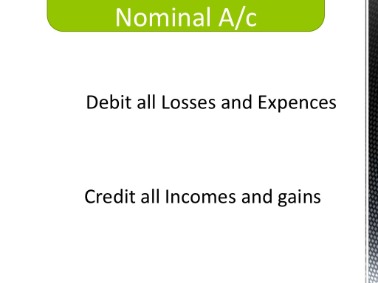
We also found it easy to apply formulas in Xero to compare our budget and actuals side by side. Yes, you can use Xero to track inventory, and the feature is available in all plans. Note that fixed asset accounting isn’t part of our case study, so there are no scores. One reviewer mentioned that a critical feature missing in Xero is the inability to export expense receipts and attach them to invoices.
The Verdict: Industry Preferences and User Opinions
While the vocabulary may vary between the two products, they both offer electronic banking, excellent invoicing, payment acceptance, and bill management capabilities. The platform’s reporting suite is among the most powerful we encountered while reviewing accounting software. On top of that, we were disappointed that Xero’s expense-tracking tools are only available with its costliest pricing package. This is the exact opposite of QuickBooks, which makes these tools available to all customers. All QuickBooks pricing packages include automatic expense importing and categorization. You can also take photos of receipts and upload them from the mobile app.

Hevo – No Code Data Pipeline
QuickBooks dashboard has a customizable home page with widgets and a planner page, allowing a real-time cash flow view. Users can personalize widget placement and hide the how to reconcile a bank statement in 5 easy steps menu panel for distraction-free work. QuickBooks is not designed for proposal writing, but users can turn estimates into proposals by attaching files or adding messages.
What is QuickBooks’ Smart Reporting feature?
It supports online payments using debit cards, credit cards, direct debit using GoCardless, and Apple Pay or Google Pay using Stripe. It uses encryption and strong security measures to protect against fraud. Xero also offers two stand-alone comparison of labor price variance vs. labor efficiency variance apps — Xero Expenses and Xero Projects — for users on its Established plan. These apps allow you to capture photos for receipts, submit expense reports, track time, and attach billable expenses and time to individual projects.
- QuickBooks allows users to include project details to calculate profitability.
- Xero vastly outperforms QuickBooks in its fixed asset management tools.
- On the other hand, Xero is a cloud-based accounting platform that has gained significant traction in recent years.
- Furthermore, both Xero and QuickBooks have a variety of plans to choose from, all of which are charged on a Monthly Subscription Basis, with the software features growing as you move up the levels.
Xero vs QuickBooks Compared: Is QBO or Xero Accounting Best?
Includes tools that help automate the reconciliation process, along with a global search function and customizable dashboard; has a simple layout. Easy to share information with your accountant and to find QuickBooks experts and online resources if needed. Katherine Haan is a small business owner with nearly two decades of experience helping other business owners increase their incomes.
A/P Management: QuickBooks Online Wins
These are the two highest scores our research team gave any accounting solutions. The ability to integrate a software product with other applications can increase its functionality tremendously. Both Xero and QuickBooks Online offer excellent integration with hundreds of apps. Its data-entry screens are more minimalist than those of QuickBooks Online, and its invoice and billing entries require less in the way of data entry.
QuickBooks supports six custom invoice templates, and lets you track the status of the invoice with read receipts. If needed, you can easily send customers reminders, and can match any payments received with the correct invoice for efficient bookkeeping. For those who like everything in neat compartments, Xero may be your best option. Instead of the “add what you need” process many other accounting software applications employ, Xero requires you to set up your business completely before you can start using the software. A standout Xero reporting feature is the ability to mark the reports you run most often as favorites. This way, you can access these reports near-instantly upon logging into Xero.
The more categories you create, the more reports you can run to get a better idea of how your business functions and where there’s room to grow. The offers that appear on the website are from software companies from which CRM.org receives compensation. This compensation may impact how and where products appear on this site (including, for example, the order in which they appear). This site does not include all software companies or all available software companies offers.
FreshBooks can be a good option for freelancers and contractors looking for an affordable, simple accounting software. There’s time tracking in all plans and phone support is available from 8 a.m. The first two plan tiers put what is fica tax taxes for social security and medicare a limit on billable clients, but not on invoices. Has robust reporting tools and report customization options, invoicing for an unlimited amount of clients, inventory tracking in higher tier plans, plus a capable mobile app.
It also offers a 30-day free trial so you can test drive the software before committing to a paid plan. While Xero’s $13 Early plan is far cheaper than QuickBooks’ $30 Simple Start plan, it’s also very limited due to the caps on invoices and billing. A better comparison is the $60 QuickBooks Essentials plan (plus the $45 Core or $80 Premium payroll plans) vs. the $37 Xero Growing plan (paired with the $40 or $80 Gusto plan). Essentials supports just three users, while Growing is unlimited, making it better value for large or growing operations.
This is because QuickBooks offers an add-on specifically for time tracking, starting at $20 per month (plus $8 per user), while Xero bundles time tracking with its main service. With QuickBooks, you can even take photos of your physical receipts, which the software automatically matches to existing expenses. Transactions can be imported from bank accounts, credit cards, or third-party services like PayPal and Square. However, QuickBooks offers a more seamless experience for two big reasons. First, QuickBooks has phone support while Xero does not, so QuickBooks users can solve their problems that much faster. Second, QuickBooks offers some features that Xero doesn’t have, like document scanning.
QuickBooks allows users to customize their invoices by selecting templates, adding logos and brand colors, choosing fonts, and editing sections. Users can also personalize their email to send invoices electronically. Free accounting software for freelancers, solopreneurs, and small businesses. Midsize to large businesses that need advanced reporting, budgeting, and invoice management. Use for Accounting, bill payment, pay runs, bank reconciliations, project tracking.
Xero and QuickBooks are both great accounting software options for small businesses. They both offer a wide range of features, an easy-to-use interface and competitive pricing. On the other hand, Xero accounting software is gaining traction for its cloud-based approach and accessibility.
QuickBooks supports in-person payments using the QuickBooks GoPayment app and mobile credit card reader. It allows companies to accept payments through credit cards, debit cards, ACH payments, Apple Pay, PayPal, or Venmo. Geekflare tested the core accounting and financial features of both Xero and QuickBooks through hands-on subscriptions. We evaluated essential features and calculated a combined overall rating for each. To ensure an unbiased review, we gathered factual data from official websites and analyzed user feedback from various sources to provide comprehensive insights and detailed reviews. As a business owner it’s crucial that you keep on top of your company’s financial health at all times, including profit and loss, balance and cash flow.
